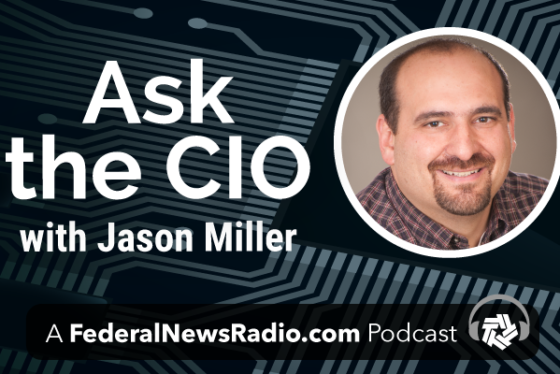Hubbard Radio Washington DC, LLC. All rights reserved. This website is not intended for users located within the European Economic Area.
On Air: Federal News Network
Cybersecurity
-
If you don\'t want employees in your agency to use a USB device, you can install an agent on the laptop that\'ll block any communication with a USB device. It is one example of a Data Leak Prevention tool, which can help you define the data you\'re trying to protect from threats within your own network. But that also means you have to know exactly what data it is that you WANT to protect. Khalid Kark of Forrester Research says if you don\'t know, you can\'t define it and the DLP tools can\'t work.
September 02, 2010 -
New tools can help you protect your network from the threat within. Khalid Kark of Forrester Research says there\'s a set of tools that are considered \"network-centric,\" that will record all the network sessions. That allows cyber sleuths to replay the sessions and find out where any breaches or intrusions are coming from - in house. There are also \"data leak prevention\" tools you can use that\'ll allow you to create your own parameters that\'ll block that information from leaving your network.
September 02, 2010 -
The cyber threat landscape has changed dramatically in recent years. Experts believe that more threats than ever are not coming from other countries, or malicious hackers - but from within the network!The U.S. National Counterintelligence Strategy says that insiders are targeting networks to intercept information, or disrupt operations. Khalid Kark of Forrester Research says agencies have to manage people, the process, and technological controls. Continuous monitoring is the new buzzword.
September 02, 2010 -
DARPA is one agency that recognizes cyber threats are just as likely to come from within the network. The agency has posted a solicitation on Fed Biz Ops looking for what they call novel approaches to insider threat detection. The Defense Advanced Research Agency is looking for a way to increase the accuracy, rate and speed of detection. The Cyber Insider Threat (CINDER) program will stop adversaries from operating within government and military networks before they can get access.
September 02, 2010 -
In the last 18 months, Melissa Hathaway said, cybersecurity threats have gotten far more stealthy and there is an understanding that it\'s not just an Internet-based threat. It can come from a multi-media device internally or even a wi-fi device.
September 02, 2010 -
Your agency\'s cybersecurity marching orders may be changing. Former cyber czar Melissa Hathaway joined In Depth with Francis Rose with the latest analysis of bills in Congress that could change the nation\'s cybersecurity mandate. She tells Federal News Radio that it\'s down to two bills and one could have an impact on the role of CIOs.
September 01, 2010 -
Algerian web pirates hack the wrong site
September 01, 2010 -
Learn more about the results from the latest IBM X-Force report. We speak with IBM\'s vice president of security strategy, Kris Lovejoy.
August 31, 2010 -
IBM\'s X-Force tracks cyber threats. We get an update on threats so far this year
August 31, 2010 -
Rob Carey, the Navy CIO, signs an electronic signature policy to let Navy offices move to online processes. Carey said the memo is not a mandate, but serves as a catalyst for program managers who believe it makes business sense to move processes away from paper
August 31, 2010 -
Learn more in today\'s cybersecurity update.
August 30, 2010 -
What operating system has the more serious vulnerabilities?
August 30, 2010 -
Learn more in today\'s cybersecurity update.
August 27, 2010
ASK THE CIO

THURSDAYS @ 10 & 2 p.m.
Weekly interviews with federal agency chief information officers about the latest directives, challenges and successes. Follow Jason on Twitter. Subscribe on Apple Podcasts or Podcast One.



